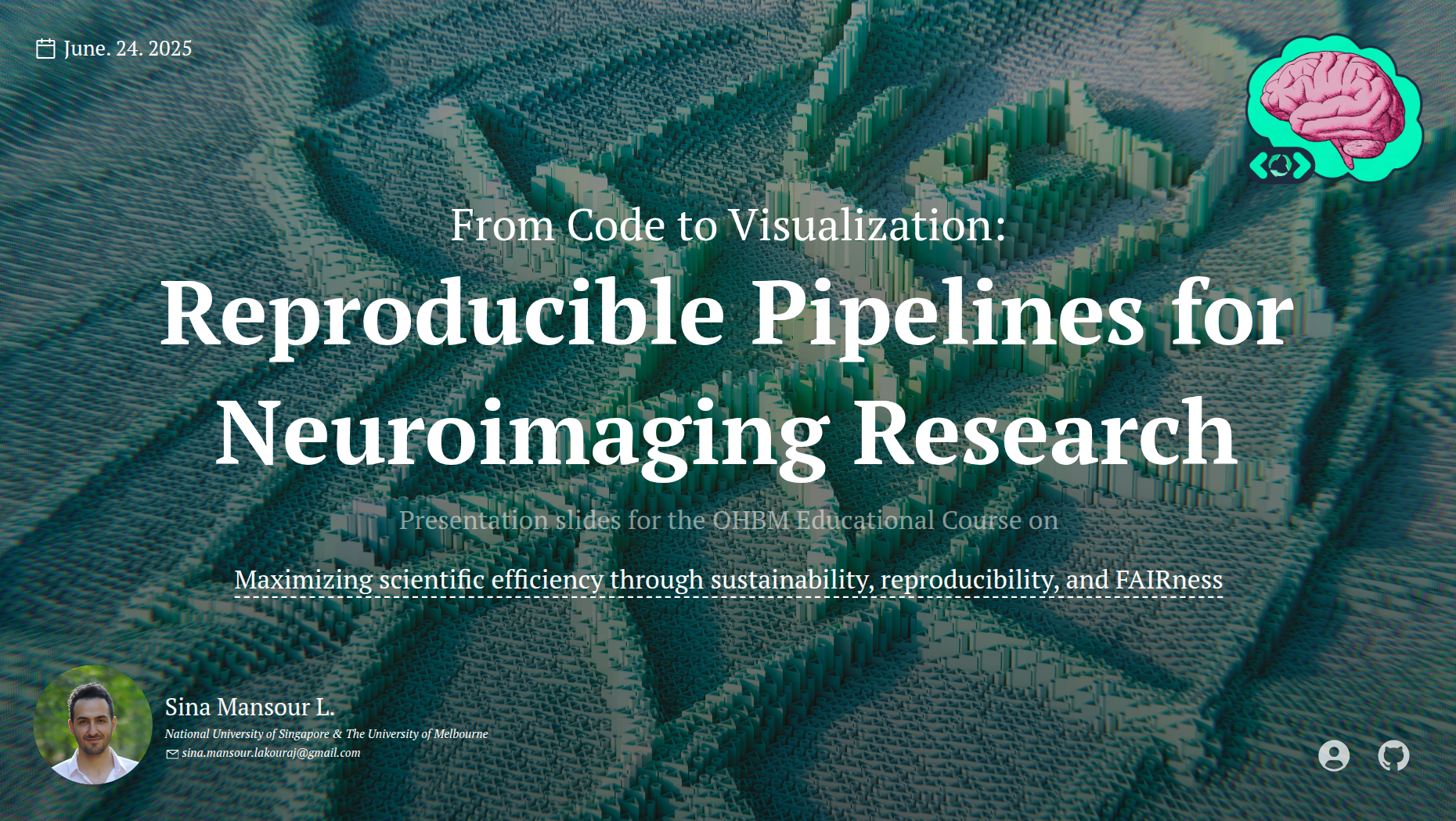📚 Reproducible Pipelines for
🧠 Neuroimaging Research#
From Code to Visualization
Author/Presenter:
Sina Mansour L., Ph.D.
National University of Singapore & The University of Melbourne
Note
This Jupyter Book contains supporting material for the session titled “From Code to Visualization: Reproducible Pipelines for Neuroimaging Research” that was part of an educational course on “Maximizing scientific efficiency through sustainability, reproducibility, and FAIRness”, presented at the 2025 OHBM Annual Meeting in Brisbane.
If you like to follow along the slides, you can find them here.

Fig. 1 The slides accompanying this book are available online:#
💬 Synopsis#
How can neuroimaging researchers ensure their findings are not only robust but also transparent and reproducible?
This book guides you through building research workflows with reproducible code and visualizations, designed to accompany your manuscript and support open science.
🧠 Why Reproducibility?#
Reproducibility helps:
✅ Maximize trust in your work
🤝 Enable collaboration across teams
🔍 Improve transparency and accountability
We provide examples and practical tips to boost reproducibility:
💻 In your Code:#
📝 Write clear, shareable scripts
🌟 Follow best practices for sharing code
🌐 Use open notebooks for full pipeline visibility
🎨 In your Visualizations:#
🖼️ Understand why reproducible figures matter
🔁 Learn how to make visualizations easy to recreate
🛠️ Build scriptable visualizations for:
🧠 Cortical surface projections
🧊 Volumetric plots
〰️🧵 Tractography results
🕸️ Brain network diagrams
… & more!
🗂️ Table of contents#
Overview of the content of this book:

